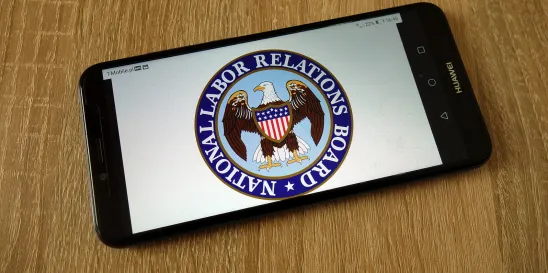A few months ago, we wrote about the National Labor Relations Board (“NLRB” or “Board”) publishing its widely anticipated final joint-employer rule (the “Final Rule”). The Final Rule overrules the NLRB’s 2020 joint-employer rule and broadly expands the definition of joint-employer under the National Labor Relations Act (“NLRA” or “Act”). See Standard for Determining Joint Employer Status, 88 Fed. Reg. 73946 (October 27, 2023) (to be codified at 29 C.F.R. pt. 103).
The Final Rule eliminates the actual control requirement found in the prior rule and instead provides that an employer will be deemed a joint-employer whether they have actual or indirect control of one or more employee’s essential terms of employment. Under the Final Rule, essential terms and conditions of employment are defined as:
- Wages, benefits, and other compensation;
- Hours of work and scheduling;
- The assignment of duties to be performed;
- The supervision of the performance of duties;
- Work rules and directions governing the manner, means, and methods of the performance of duties and the grounds for discipline;
- The tenure of employment, including hiring and discharge; and
- Working conditions related to the safety and health of employees.
The Final Rule also clarifies the definition of essential terms and conditions of employment, identifying the types of control necessary for a joint-employer relationship, and includes an explicit bargaining requirement if a joint-employer relationship is formed.
The Final Rule was initially set to take effect on December 26, 2023, but the Board extended the effective date to February 26, 2024, and the Final Rule will only be applied to cases filed after that date. The Board extended the effective date following a Congressional Review Act (“CRA”) resolution, which permits Congress to reject agency rulemaking through the CRA process via a simple majority in both chambers. Following the CRA resolution, the Government Accountability Office notified the NLRB that it failed to follow the CRA mandated 60-day waiting period prior to the implementation of major federal rules following their receipt by Congress.
Recently, Sen. Mike Braun (R-Ind.) asked the Board to again delay the implementation of the Final Rule, this time alluding to the ongoing challenges to the Final Rule in both Congress and the courts. In Congress, the House narrowly voted in January 206-177 to reject the NLRB rule under a CRA resolution. Procedurally, the next step is for the Senate to vote, which likely will not occur before March.
In court, two separate lawsuits have been filed in Texas and Washington D.C., each challenging the Final Rule. In Texas, the US Chamber of Commerce and several other trade groups sued the NLRB to block the Final Rule in the US District Court for the Eastern District of Texas. In response, the Board argued that the lawsuit instead belongs in the D.C. Circuit, where the Service Employees International Union (“SEIU”) filed a separate petition for review of the Final Rule. The SEIU’s lawsuit broadly supports the Final Rule, but wants the Board to broaden the job terms that the NLRB will consider.
Notably, neither lawsuit nor the Senate’s impending CRA vote has stayed the Final Rule’s effective date, hence Sen. Braun’s letter. Sen. Braun’s request does add a new wrinkle, and whether the Board agrees will be determined soon. While we will continue to monitor the situation, employers should prepare for the February 26th effective date by having their current and pending contracts with third parties reviewed by experienced labor counsel to determine whether those agreements give rise to a joint-employer relationship under the new standard. Employers should also consider training supervisors and managers who interact with third-party contractors on the new standards.





 />i
/>i

